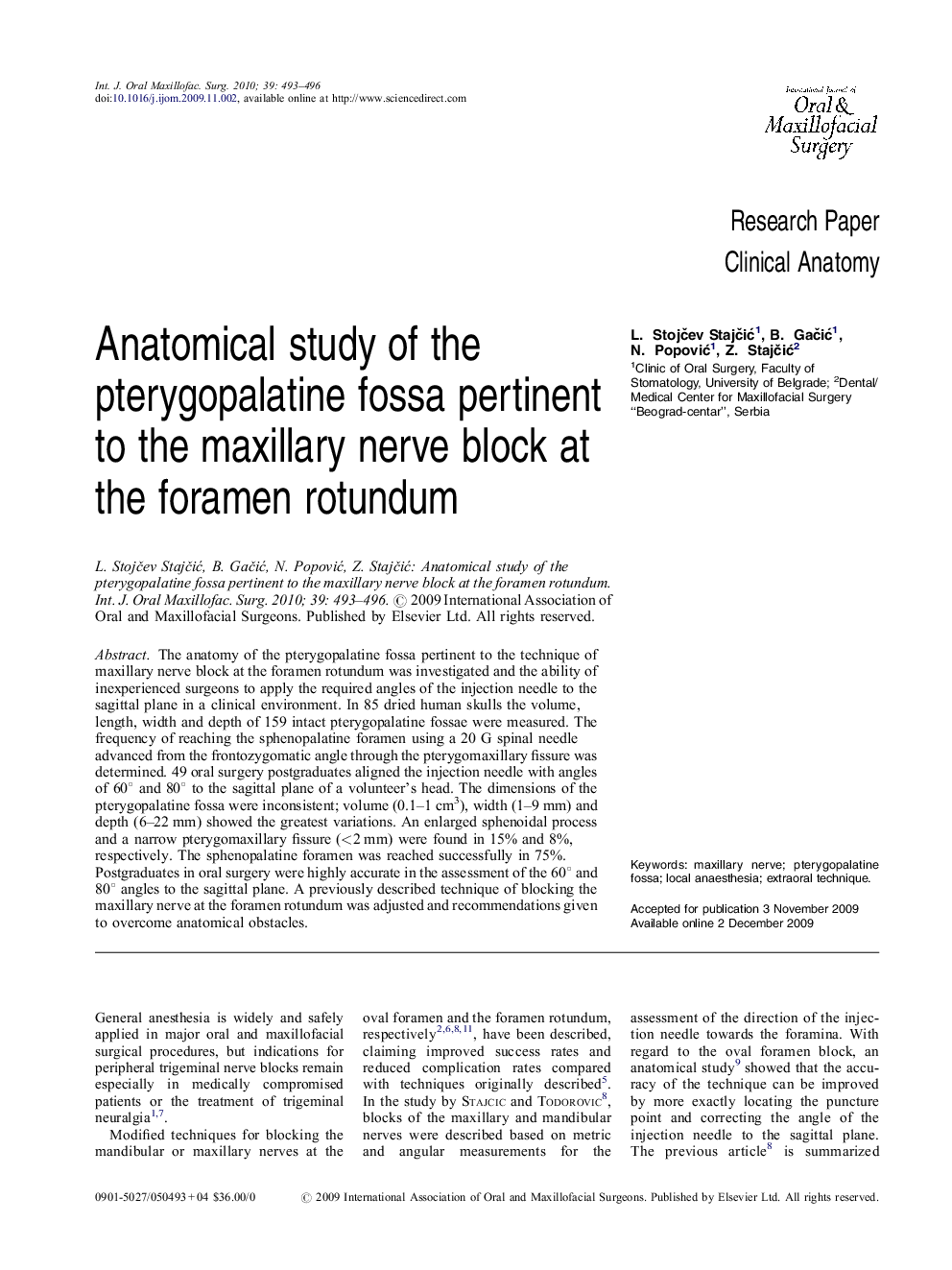| Article ID | Journal | Published Year | Pages | File Type |
|---|---|---|---|---|
| 3133656 | International Journal of Oral and Maxillofacial Surgery | 2010 | 4 Pages |
The anatomy of the pterygopalatine fossa pertinent to the technique of maxillary nerve block at the foramen rotundum was investigated and the ability of inexperienced surgeons to apply the required angles of the injection needle to the sagittal plane in a clinical environment. In 85 dried human skulls the volume, length, width and depth of 159 intact pterygopalatine fossae were measured. The frequency of reaching the sphenopalatine foramen using a 20 G spinal needle advanced from the frontozygomatic angle through the pterygomaxillary fissure was determined. 49 oral surgery postgraduates aligned the injection needle with angles of 60° and 80° to the sagittal plane of a volunteer's head. The dimensions of the pterygopalatine fossa were inconsistent; volume (0.1–1 cm3), width (1–9 mm) and depth (6–22 mm) showed the greatest variations. An enlarged sphenoidal process and a narrow pterygomaxillary fissure (<2 mm) were found in 15% and 8%, respectively. The sphenopalatine foramen was reached successfully in 75%. Postgraduates in oral surgery were highly accurate in the assessment of the 60° and 80° angles to the sagittal plane. A previously described technique of blocking the maxillary nerve at the foramen rotundum was adjusted and recommendations given to overcome anatomical obstacles.
